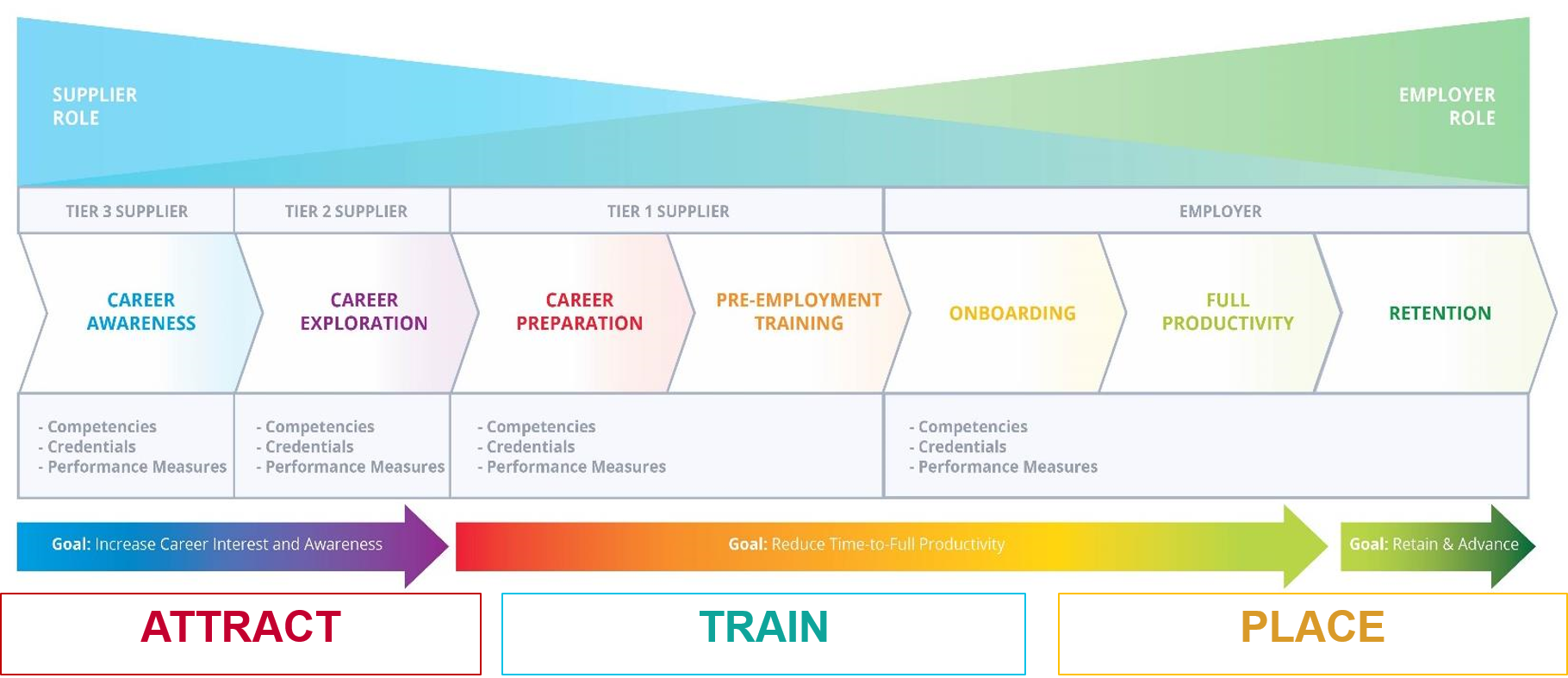Experiences, Engagement Key to Career Exploration
Published Dec 11, 2020 by Susan Moore
Beginning with the 2014-15 school year, Texas students entering ninth grade could choose to complete the academic and course requirements for one of five endorsements: science, technology, engineering, mathematics (STEM); business and industry; public services; arts and humanities; and multidisciplinary.
A student’s chosen endorsement has long-lasting implications on their educational and career pathways; courses they take in high school matter and set the stage for the education, skills training, and careers they will pursue throughout their lives.
But the traditional path from K-12 school, to post-secondary school, and ultimately to a long career at one job is becoming less and less common. Students need to be better informed of the options available to them for getting into as many opportunities as possible. Education providers, organizations and employers can assist students along their path from ‘cradle to career’ and as they make career decisions.
Laura Brennan, director of Texas OnCourse, and Victoria Chen, co-founder and executive director of BridgeYear, shared during an UpSkill Works forum held in December some of the tools, curricula and best practices they’ve developed and observed for boosting career awareness and career exploration among middle and high school students. Bryant Black, the Partnership’s director of regional workforce development, hosted the conversation.
Texas OnCourse supports students along the pathway from middle school to high school to success beyond high school. It was created by the Texas state legislature to improve college and career advising, and support students in critical decision-making around high school, college and career planning. It currently is an initiative of the University of Texas but will become part of the Texas Higher Education Coordinating Board in January 2021, where it will further the board’s mission of ensuring quality advising for students.
Texas OnCourse provides career awareness curricula and tools to widen the scope of careers middle school students see or understand. It also helps teachers better support students along their path to college and career readiness. Its student-focused online tools include games and quizzes grounded in workforce data. Texas OnCourse has an online training platform (Texas OnCourse Academy) for advising professionals involved in guiding students to college and career success. It also has focused on how to help educators implement tools and share best practices across the state.
Middle school is a critical time for students to explore careers as they prepare to select endorsements. It is a time when students usually form their career identities; by high school, students typically have gravitated towards one industry, Chen told the audience.
BridgeYear, an organization that connects underserved youth to careers and educational pathways that provide economic stability and independence, grew out of observations co-founders Victoria Chen and Victoria Doan made while working as high school college counselors at Sharpstown High School. Chen shared that many students had unrealistic expectations of the amount of education needed to start specific careers, limited knowledge of the breadth of career options in the economy, and little understanding of what individuals in given careers did day-to-day.
BridgeYear takes a hands-on approach to career exploration. Through its Career Test Drive® fairs – before the COVID-19 pandemic led to limited building capacities and social distancing measures – students could try out the tools and skills needed for various careers in-person. This summer, BridgeYear re-imagined its fair model and created kits, which students and educators can order, that contain hands-on activities relating to two high-growth, in-demand careers. The test-drives, Chen said, give students “something tangible they can react to” as they consider whether a career option fits their interests.
Chen and Brennan, a former high school advisor, discussed the importance of setting up college and career readiness as a unified idea in students’ minds because preparing for college and preparing for a career should not be an either/or decision.
College and career readiness programs (and educational partners) seem to be at their best when educators are able to take the time and effort to understand the wants and needs of their students.
Brennan has seen the greatest impact of Texas OnCourse’s work with district-level buy-in from the middle school curriculum to the high school counseling content, and when counselors, educators and school/district leadership are aligned towards clear goals around college and career readiness.
“We’ve really been focused on how to encourage more systemic adoption [and] how to get everyone to create a more unified experience for that student who’s going through from middle school to the high school,” she said. “We’ve seen districts that have taken really innovative approaches to connecting the middle school educators and making sure that experience is seamless for students.”
BridgeYear’s strongest school partners are those that have examined every type of student and every type of post-secondary goal their students have and know the suite of programs and services within their districts that can help their students achieve these goals. The schools that set up the most students for success after high school have a range of programs and interventions that might specialize in different aspects of college or career exploration.
“One program cannot fit all the needs of our students,” Chen said.
But the work to bring students into the workforce and help them sustain successful careers does not stop when high school ends. Career exploration can be viewed as a lifelong journey – or continuum –beginning with career attraction at a young age, moving into training, placement and finally retention or advancement. Community colleges are premier providers of technical degrees and certifications, and skills development programs for many careers, but the full journey requires action and interventions from employers as well as educators.
“We do a really good job pushing some students all the way through this continuum, and with some students we stop at career awareness. How can we get more students through, would be the question. That […] relies on employer partners. It does involve that next step. After the hands-on exploration is the preparation, the training stage, and that's something we can't do alone,” Chen said.
View all past UpSkill Works forums.
 The Houston Report
The Houston Report

















